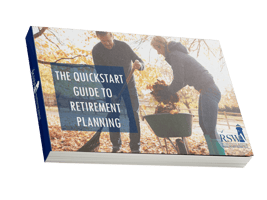In late July 2025, the United States and the European Union reached a framework trade agreement imposing a 15% tariff on most EU exports, significantly lower than the originally threatened 30% tariffs, thereby averting a potential trade war. According to reports, business leaders—though opposed to tariffs in principle—welcomed the clarity brought by this agreement, which allows for more stable planning amid prior uncertainty. The deal reflects a recurring Trump-era pattern: initiate negotiations with extreme tariff threats, ramp up rhetoric and escalation, then settle on negotiated tariffs in the 10-15% range, while leaving finer sector-specific details under negotiation. WSJ
The deal drew strong criticism from European officials. France’s prime minister called it a “dark day for Europe.” Some economists labeled it as asymmetrically favorable to U.S. interests, arguing that strategic leverage was ceded and key sectors remain exposed or unresolved. AP News
Federal Reserve: The Fed met this week to determine short-term interest rates, and the rate-setting committee decided not to cut rates. But the vote was not unanimous. Some members want to cut rates now, while others want to wait for more data. It’s not hard to see why there is dissent, as there are arguments for both sides. The economy is solid, and tariff policy has yet to be felt, bolstering those wanting to wait. While a slowing economy and job growth buttress an argument for cutting rates now, since rate changes take a long time to have an effect, and they want to get ahead of any slowdown. Regardless, rates stay where they are for now. WSJ
But Do Short-Term Rates Matter as Much as Long-Term Rates? President Trump wants the Fed to cut short-term rates dramatically, and to do it now. But is he focused on the wrong interest rate? Longer-term interest rates, such as the ten-year Treasury bond, are pegged more often to mortgage and consumer loans, as well as corporate borrowing, not short-term rates. Last September, when the Fed started cutting short-term rates, the ten-year bond actually increased as investors worried about low rates causing higher inflation. When long-term interest rates increase, it makes borrowing more expensive and is an economic dampener, the opposite of what the President desires. Maybe it’s time to look further out. WSJ
Financial Planning/Investment Strategy Corner:
The Internal Fight of Recency Bias – And the Long-Term Compounding of the Markets: Focusing on the short-term in investing is often fueled by recency bias—a behavioral tendency where people give greater weight to recent events over historical trends or long-term patterns. This can lead investors to overreact to the latest news, market volatility, or earnings reports, assuming that what’s happening now will continue indefinitely. As a result, investors may chase performance during rallies or panic during short-term declines, making emotionally driven decisions that deviate from a long-term strategy. But markets are inherently cyclical, and short-term noise may not reflect the stock market’s true value or future potential. Successful investing requires resisting the urge to act on headlines and instead anchoring decisions in long-term goals and fundamentals.
The Rule of 72: For investors with a long-term time horizon and a tolerance for volatility, there can be rewards for ignoring recency bias, the latest headlines, and volatility – namely the potential higher returns of stocks aided by compounding. Since 1926, the U.S. stock market has averaged an annual return of 10.43%. Over decades, a return that high is magic for compounding. The Rule of 72 is a simple formula used to calculate how many years it will take an investment to double for an annualized return. To use the rule, divide 72 by the annualized rate to calculate the time frame. In this case, 72/10.43% = 6.90 years. Therefore, using historical returns of the stock market, investors have doubled their money less than every seven years. So, ignore the headlines, and let the stock market do the heavy lifting for you! NYT – A Recipe for Doubling Your Stock Returns Again and Again Investopedia – The Rule of 72
Quick Hits:
- Should you be concerned about arsenic in rice? Healthline
- Should pets sleep next to you? AP News
- Will AI make us dumber? NYT
- And could AI be a boon to high agency people? WSJ
- Leaping sturgeons can be seen on Maine rivers: AP News
- Two meteor showers peak in late July and early August – happy viewing! Phys.org
- Tomatoes are in season! Here are ten recipe ideas to enjoy: Allrecipes
Summer Oysters in Maine: What began as a humble map in 2017 has grown into a digital trail of over 150 oyster farms, raw bars, and tide-kissed adventures from Kittery to Lubec. The Maine Oyster Trail is a testament to the growth of Maine oyster farming, harkening back to the traditions of living off the bounty of the sea. Each oyster tells a salty, mineral-rich tale of its coastal birthplace, and with the Maine Oyster Trail’s interactive planner and Oyster Passport, you can build your own shell-worthy trip including farm tours, dockside tastings, and kayak-to-table experiences. Maine Oyster Trail Interactive Map NYT – Slurping Toward Nirvana on the Maine Oyster Trail
More Oyster Info – An Oyster Cocktail? If you haven’t had enough oysters after hitting the trail, or if you can’t get to the trail, you can get it in your cocktail. Providence-based Industrious Spirit Company has gone a bit salty with an oyster-based vodka, infused with real oysters. If you want, you can get a taste of the sea in a maritime martini! The Industrious Spirit Company
Oyster Quote #2: “So, have you heard about the oyster who went to a disco and pulled a mussel?” Billy Connolly
Thank you for reading RSWA Financial Advisor Insights! We welcome feedback, and please forward this to a friend! Be well, take care, and stay safe!
